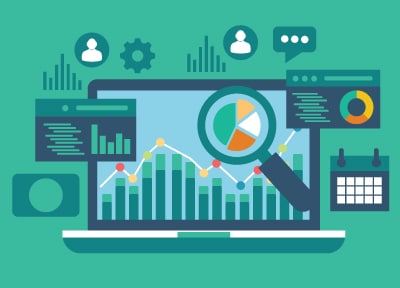Keeping your most important assets, your employees, safe is critical to every organization! Occupational health and safety are more than just a box-checking exercise; they have evolved to consider and strategize how organizations can enhance safety across operational processes, engaging team members at all levels, from shop-floor employees to leadership, in various ways, improving workflows and reducing the time and resources required.
Digital transformation is indispensable in helping organizations achieve evolving safety goals. Workplace safety innovations through digital tools have gained popularity in the past few years, assisting organizations to seamlessly manage their safety programs. Here’s how digital tools can help optimize health and safety management and boost your organization’s safety culture!
1. Easy Tracking of All Safety Actions
When safety concerns are reported, prompt corrective actions are at the core of any organization’s safety culture. Digitalization can help site leaders ensure a safe and secure work environment by promptly addressing any safety hazards and concerns and taking corrective actions to ensure their people are safe and secure. After all, employees are every organization’s greatest asset, and prioritizing their health and safety is an integral part of good corporate governance.
With the advancement of digital tools, such as, corrective actions can be tracked on a single centralized platform, giving site leaders access to real-time capabilities to manage all safety actions effectively.
2. Engage Every Team Member
Engaging every single employee and building accountability across enterprise-wide teams – from shop-floor employees to leadership – is the first step in developing a strong safety culture at the workplace. If safety is made a priority, employees can engage and openly communicate their safety concerns and report any unsafe acts and conditions promptly.
Innovative and easy-to-use digital solutions can help employees and contractors engage in seamlessly reporting safety concerns. Employees can use open-access forms to report and resolve their workplace issues faster. As an Occupational Health & Safety Executive, you can seamlessly manage and escalate problems to achieve safety and compliance objectives.
3. Easier Management Review for Leadership Engagement
Managing safety data manually and in spreadsheets can lead safety managers and officers to overlook trends and metrics crucial to safety management. Yet again, digital tools are vital in aiding these professionals in performing their duties systematically. It can be anything from analyzing safety metrics, KPIs, and results to empowering leadership to make decisions that promote a safety culture.
Digital tools can consolidate and analyze large amounts of safety data and compare them swiftly, analyzing safety metrics from across multiple programs on a single platform and generating powerful dashboards and reports that highlight critical data and help safety leaders make vital decisions, analyzing data from various applications.
4. Be Proactive with Your Safety
Promoting a proactive safety culture requires careful planning of safety programs, hazard assessments, and actions to facilitate operations in the safest way possible. Safety First is the motto of such a proactive safety culture!
Artificial Intelligence and other advanced technologies can capture critical trends intelligently and minimize workplace incidents. AI-powered solutions can define the risk profiles for recorded incidents, helping prevent potentially serious incidents (PSIs) with greater accuracy than traditional manual identification methods, which are widely utilized in several industries.
Leverage Digital Tools to Enhance Your Organization’s Safety Culture
To ensure safety, your organization should embrace digital technologies and solutions capable of powering sustained environmental, safety, and health performance excellence. Explore Benchmark’s best-in-class digital EHS Management Systems, integrated with advanced AI and analytics, to help you meet your security and EHS priorities.




